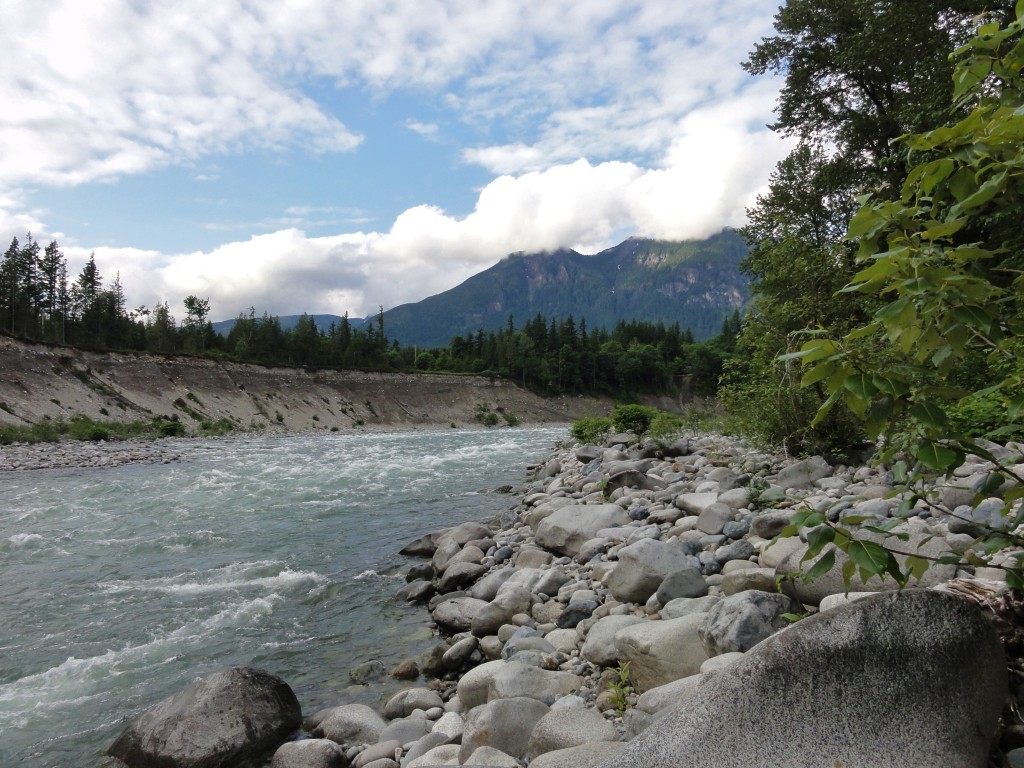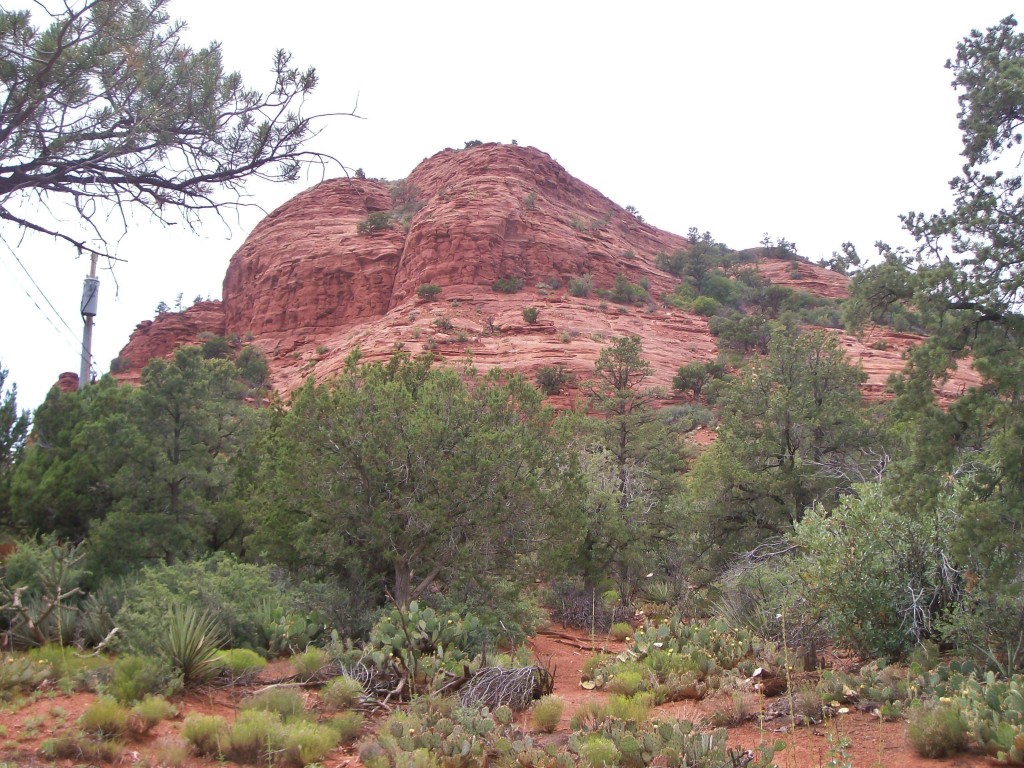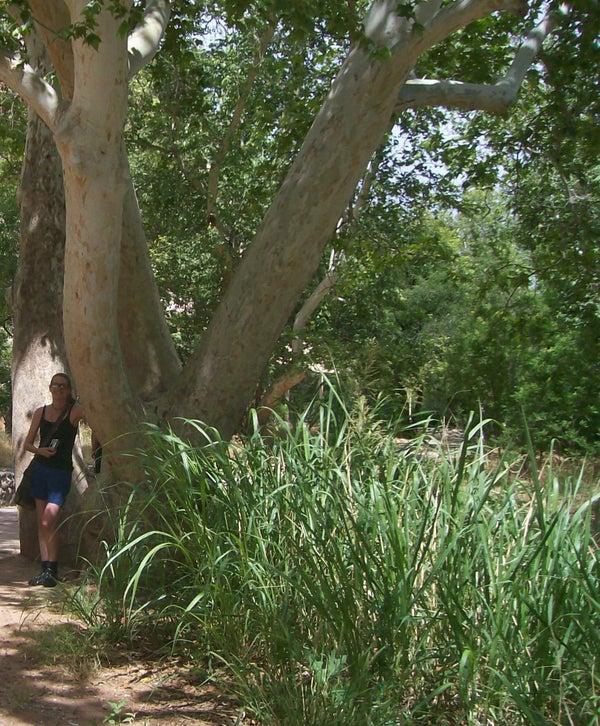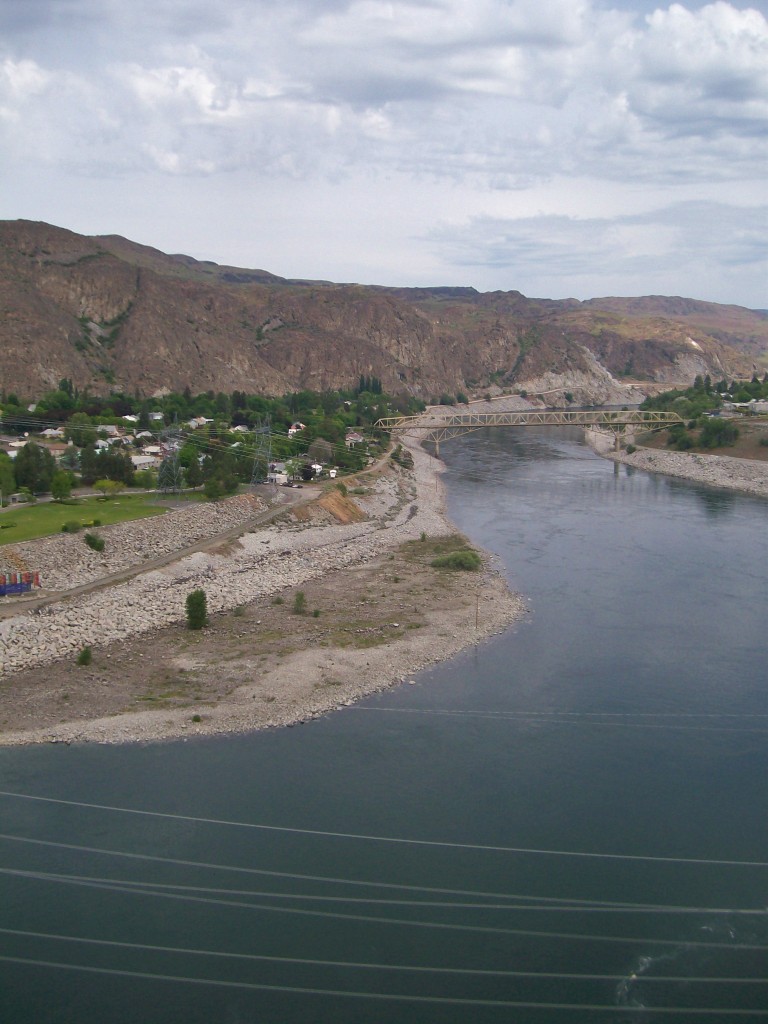This article was published in Scientific American’s former blog network and reflects the views of the author, not necessarily those of Scientific American
I don't grok rivers. Some folks seem to understand them on an almost instinctual level, whether they grew up intimate with them or developed that relationship later in life. That's not me. My experience with rivers runs thusly: they're gashes in the landscape with rocks in, where you have to watch for flash floods; the ones that ran throughout the year tended to do so at the bottom of very deep, very vertical canyons.

- The Colorado Rivers runs through it. No, seriously, if you click to embiggen, you'll see a microscopic bit of water in that hole in the center. Also, there is a watercourse leading up to it. That other stream hasn't got water in it just now, cuz this is the high desert, baby, yeah. Actually, low desert where that is, because it's almost a mile down. This was my first youthful impression of rivers. No wonder they are mysterious and inaccessible to me. Image courtesy Cujo359.
On supporting science journalism
If you're enjoying this article, consider supporting our award-winning journalism by subscribing. By purchasing a subscription you are helping to ensure the future of impactful stories about the discoveries and ideas shaping our world today.
People talked about rivers you could sail more than rafts on, and I didn't really understand. I still don't, not on the instant-grasp-of-concept level. To me, a body of water that doesn't usually dry up and that you boat around on is a lake. When we crossed the Mississippi River visiting family when I was a small child, I got overwhelmed by the experience - it should not take more than thirty seconds to cross a river, except at Hoover Dam, where the heavy traffic brought you to a crawl on top of the dam. But that was okay, because the river was still a narrow ribbon at the bottom of a very deep canyon, and thus exactly what a river should be. Not this wide, muddy monstrosity that you could barely see the opposite bank of. That's not a river, silly people. It's a very long, skinny lake, or perhaps a freshwater inland sea.
I knew rivers had floodplains, because people in Arizona like to build houses in them. They're nice, flat ground near that dry gash in the desert that sometimes gets water in it, and is frequently very green and lovely what with all the trees that have drilled down to suck up the water that's sunk deep into the ground. People never worried, because there was never any water there - except every few or a dozen or fifty years, when we'd get a really wet spring or monsoon, and their houses would sing "I'm Sailing Away" like Cartman as they rafted down the suddenly raging river. That's one thing I knew about rivers: you absolutely must respect their floodplains.
But people would talk about the rich soils in said floodplains, and I'd look at the rocks and thin dirt left by receding floodwaters in ours, and scratch my head in puzzlement. Harf?
I remember being delighted the day Jim Bennett taught me the word "riparian," and showed me we actually had some of said riparian habitat in Arizona. It was nice to have a word for the areas that were green and lush compared to the searing dry country round them.

- Making friends with a sycamore at Montezuma Castle. That's Beaver Creek alongside it - it actually has got some water in it. Usually, something like this would be called a river in Arizona, even if it's two inches wide, but we're never very consistent about what we call things related to water here. Image courtesy Cujo359.
So that was a river: often bone-dry, rocky, likely stuck at the bottom of a deep canyon, occasionally dangerous but never floody for long, most recognizable due to a straggling line of trees, although those weren't always present. These Arizona streams warped my perception of what a river is. I spoke a few river words, not fluently. I knew broad, deep, always-flowing rivers existed, but didn't have any direct experience with them.
Then I moved to the Pacific Northwest. On the western side of the Cascades here, even the tiniest rivulets are likely to be carrying water the majority of the year. Dry dirt is a novelty. Most of the creeks could eat Arizona's creeks for breakfast and still have room for elevenses, lunch, tea, dinner and supper, and the rivers laugh in in our rivers' general direction. They even snigger at the mighty Colorado: "Oh, look, isn't that precious - it's pretending to be a real river!" Even on Washington's dry side, I ran in to more river than I was prepared for. This stuff has water in it, people, and you can walk up to it without having to climb down a 1000 foot drop.
And the rivers on the west side - they were aliens. I had no idea what they were on about. Some of them flowed straight and quiet through cities, and I didn't understand them at all until I discovered they'd once meandered here and there over valley floors until humans straightened them out.
Then there were rivers that still had their rough edges, and displayed behaviors I'd heard rivers that always had water in them were supposed to indulge in, like creating gravel and sand and point bars, meandering, and doing interesting stuff to their banks. They were also eye-poppingly wide.

- The Skykomish River at Al Borlin Park, Monroe, WA. This is the first river here that I grew familiar with that wasn't thoroughly domesticated. Humans have mucked it about in places, but it's still fairly wild, and it's like so many of our Pacific Northwest rivers: it starts small and builds to something enormous enough go motorboating on. I'm still a little surprised when I see plain ol' motorboats zipping up these rivers, but I'm getting gradually used to it.
And when you went up into the mountains, where they arose, they changed character quickly. They were full of rapids, weren't flowing through such wide, flat floodplains, and were fast, narrow, wild waters hurtling down-mountain with joyful abandon.

- The Skykomish near Gold Bar. Okay, it's still bloody enormous by Arizona standards, but considerably narrower and swifter here than it is at Al Borlin Park a few dozen miles downstream. There are words for the tall, steep bank it's cut, and the bouldery flat bit my intrepid companion and I were wandering all over that day. There are words for what it does, what it is, and what changes it goes through. There's a whole language of rivers, and I only speak enough to get myself into trouble with the natives.
These rivers were often glacier-fed, frickin' freezing, wild colors, and did things most Arizona rivers never seemed to do. I began learning words like fluvial. There are fluvial processes, and things like fluvial terraces, and all sorts of mad things rivers leave behind. They create deltas, sometimes enormous deltas. There are estuaries where rivers meet the sea. Gargantuan floodplains built up thick piles of sediment. And those things leave traces in the geologic record. Arizona's rivers, in fact, once were mighty, and left vast swaths of rock that show they affected enormous areas.

- Standing on an ancient floodplain, the Hermit Formation. I forget what Sugarloaf, that big knob o' rock in the center, is - possibly part of the Schnebly Hill Formation. Still. Hermit. Under our feet. Rivers ran through here, and flooded, and left thick sediments that turned into some of Sedona's brilliant red rock. I used to play on those floodplains, turning myself thoroughly burnt orange in the process, and never realized I was splashing through the ghosts of rivers. Image courtesy Cujo359.
And it's hard for me to comprehend how these ribbons of water can do this. I don't speak their language. They can't explain to me what they're doing, how and why. We sit together, and the rivers speak, but all I hear is sounds. It's like being babbled at by a native Russian speaker: a stream of sound flows by, and occasionally a word bobs in the current that I can pick out, recognize, and I nod enthusiastically: "Da! Da!" I get that word, although I have no idea how it relates to the others. Then we're right back to nyet.
Fortunately, I have friends who speak the language of rivers. They're slowly teaching me to speak it. And while I'll never be as fluent as they are, I'll at least be able to say, "My aunt's fluvial terrace is on my uncle's watershed" with confidence, though with a horrific accent. And I'll be taking you along on that journey in this short series.
Rivers, my friends, are geologically fascinating entities. They come in a variety of styles. And if you don't speak their language, they may kill you. Also, here in the Pacific Northwest, they've interacted with volcanoes in intriguing ways. Additionally, they are beautiful. Reasons enough to learn their lingo, eh?


